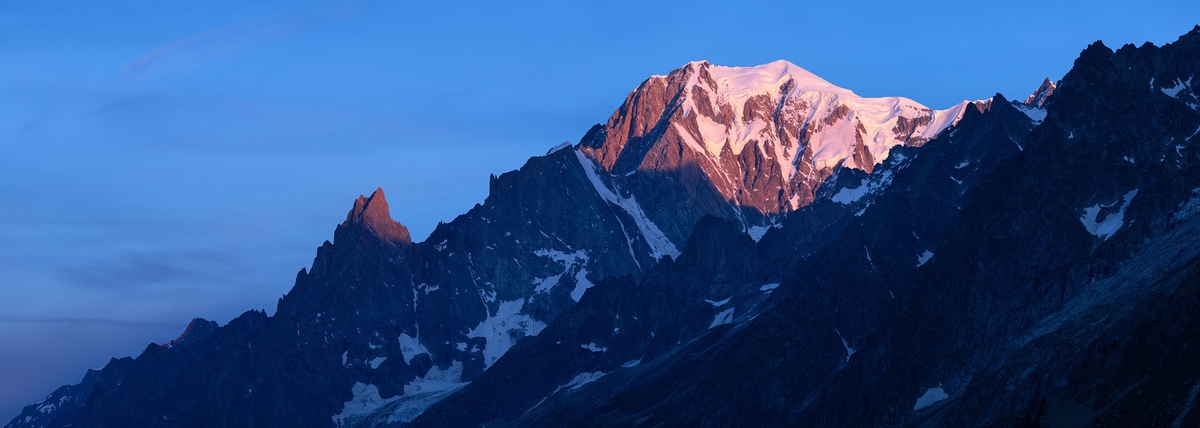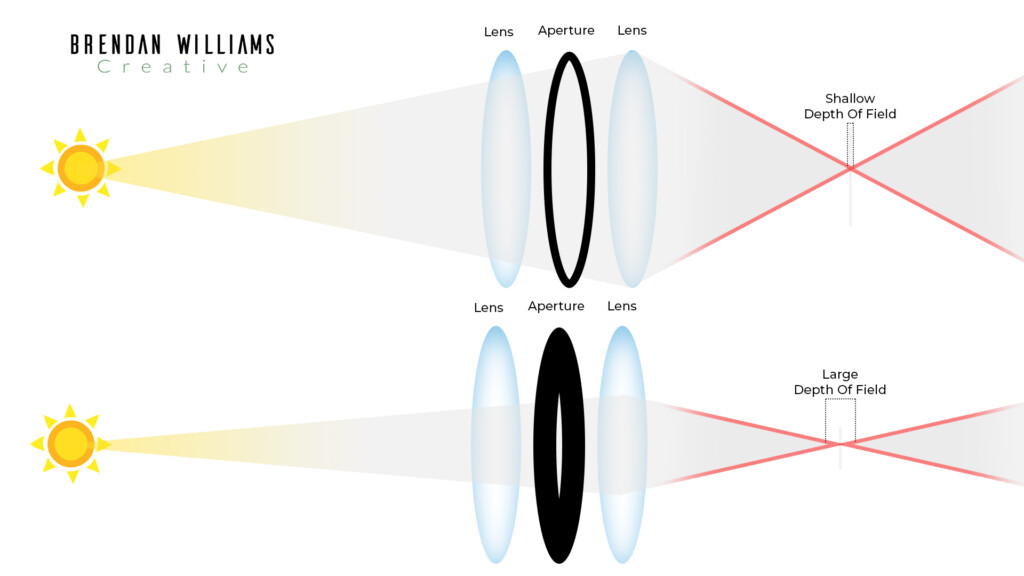The Beginners Guide To Aperture In Photography
Whether you’re a casual shooter or trying to make photography your full-time gig, it’s essential to understand how and why aperture plays a crucial roll in your photography.
In this article, I’ll be breaking down everything you need to know about aperture in photography and some useful tips you probably didn’t know about. You’ll learn everything from how aperture works, the ways it alters your pictures, and how to pick the right aperture for any situation.
This post will be continuing off of the beginner photography settings series I am currently writing. If you’re new to this series, then be sure to check out the previous articles covering the best beginner camera settings, and learning why shutter speed is essential.
What Is Aperture In Photography
Aperture is a small adjustable ring that is found on the inside of your lens. This little ring is made up of several ‘leaves’ or ‘blades’ that seamlessly slide together depending on your aperture setting. As the leaves slide together, it alters the size of ‘the hole’ in your aperture. This will give you either a wide or small aperture. Depending on the aperture (the size of the hole), it’s going to affect both the exposure and depth of field in your photograph.
How Is Aperture Measured
The size of your aperture (again, the size of hole being made by the blades) is measured in F-Stops. F-Stops are used to reference the size of your aperture to help you figure out the best exposure and depth of field to use. A typical aperture range you’ll see in lenses is F/2.8 through to F/22. The smaller the F-Stop number, the wider the physical hole in your aperture is. The larger the F-Stop number, the smaller your aperture will become. To better visualize this, below is an example of an aperture from F/2.8 to F/22.
What Is Depth Of Field
Depth Of Field is a term to describe how much is in focus at one time. As you change the size of your aperture, it’s going to affect how much can stay in focus. What you’ll need to remember is that with a wider aperture like F/5.6, less is in focus at once. This means you have a shallow depth of field. With a smaller aperture like F/16, more is in focus meaning you have a large depth of field. Below are examples of a shallow depth of field versus a large depth of field.
Remembering aperture ranges and whether they have a shallow or large depth of field is crucial for all photographers. Being able to use this as a creative and compositional tool is a huge part of taking more professional pictures.
Why Is Aperture Important In Photography
F-Stops are a vital thing to keep track of as you begin learning about aperture in photography. Without intentionally choosing an aperture setting, you could be unintentionally creating unfavorable focus effects.
Your Aperture Decides How Much Is In Focus
With a wider aperture like F/2.8, there’s an extremely shallow depth of field. This means that there’s only a minimal amount of things that are in focus at once. If you were to take a photo of a beautiful view using F/2.8, there would only be a small amount of your photo perfectly in focus. The rest might appear just a little bit blurry when you look closely at the picture.
If you were to take the same photo at a smaller aperture like F/11, you’d have a much greater depth of field. This would mean nearly everything in your picture would appear tack sharp, and nothing would be blurry.
Your Aperture Can Blur Your Background For More Professional Images
Now for a slightly different example, let’s say you are shooting a portrait. If you were to use an aperture of F/11, which allows for more to be in focus, then your subject might appear nearly as in focus as the background. This isn’t always ideal if you want to make them stand out from the surrounding environment.
A better way to shoot that same portrait would be to use a wider aperture like F/2.8, which has a very shallow depth of field. With less in focus at one time, you can ensure your subject looks perfectly sharp, while the background of your photo stays completely blurred. Now your subject will stand out better from the environment, and any distractions are totally out of focus!
Aperture Affects The Exposure Of Your Photos
Since your aperture physically changes sizes between different F-Stops, some F-Stops will allow more light into your camera than others. Just think, a wider hole lets much more light in than a small one. This simple fact makes a big difference in the overall exposure of your pictures. Adjusting your aperture could be the answer you needed to make your exposure more even.
How Does Aperture Change Your Depth Of Field
If you start to think about how aperture actually changes the depth of field, you’ll probably be curious how that even occurs.
As beams of light travel through your lens and aperture, they get refracted. The refraction redirects the incoming light to converge into a single point on the sensor. The converging beams of light become the depth of field and dictate how much is in focus.
As the aperture changes in size, the angle of refraction changes dramatically. With a smaller aperture, the angle of refraction is significantly less steep than that of a wider aperture. At a lower angle, the beams of light can converge together for over a larger distance, equaling a larger depth of field! The diagram below better illustrates this idea.
Although you don’t need to memorize this bit of information, it can be helpful to better visualize how depth of field is created.
Aperture Quick Tips And Review
Now that you understand more about aperture in photography let’s go over some useful tips and review to make things easy.
Your Aperture Range Will Depend On Your Lens: The aperture range you have is ultimately dependant on the lens you are using. A typical aperture range for entry-level lenses is F/4 to F/22. This is more than enough to capture a wide array of photos and still utilize shallow focus in your photography. Pro-level or prime lenses will offer wider aperture capabilities but at a significant increase in cost.
The Sharpest Aperture For Most Lenses Is F/8: F/8 is a great mid-range aperture that often captures the sharpest images. That doesn’t mean you should only use this aperture, but it’s a useful bit of information to keep in your head.
A Large Depth Of Field Is Not A Bad Thing: I’ve heard many photographer’s online claim that using an aperture above F/16 will degrade the quality of your photos. This is entirely false. Your photos will remain the same quality, but more parts of your photo will stay totally sharp. This can sometimes have a distracting effect and make it harder for your eye to focus on the subject. However, using a large depth of field can be great for landscape photography.
You Must Consider What You Are Shooting Before Choosing An Aperture: The best aperture to use will totally depend on the type of photo you are taking. If you’re shooting a portrait, you’ll want to favor a wider aperture to add background blur. If you’re shooting an epic view of the mountains, you’ll want to use a smaller aperture to keep everything in focus. Always consider what your subject is before deciding on your aperture.
What’s The Best Aperture For Beginner Photographers
There are a ton of theories for what aperture will be best for your photography. In reality, it only comes down to one thing: your own personal style. Landscape photographers won’t use the same apertures as portrait photographers. Sports photographers won’t use the same apertures as macro photographers. The best aperture will depend on the style of your photography and what your subject is.
Picking camera settings as you begin to learn manual mode can be a challenge for many beginner photographers. Trying to remember the best settings to use in different situations can make for a serious headache. To help you out, I’ve created a FREE Manual Mode Cheat Sheet to act as your handy reference guide to perfect camera settings. Whether you’re wanting to pick the best aperture for your photo or can’t figure out what shutter speed to use, this Manul Mode Cheat Sheet has you covered! Make sure to grab yours for free by clicking here!
Conclusion
Aperture in photography is one of the most essential things for beginners to understand. With a solid understanding of how aperture plays a role both technically and creatively, you can start capturing more professional images. If you’re a beginner photographer and struggling to break into manual mode, then be sure to check out my previous post on the best camera settings for beginner photographers. If you want even more photography goodness, make sure to subscribe to my email list and score yourself my Photography Essentials ebook totally for free! Sign up and get access by clicking here.
If you found this post helpful or know someone who should learn more about aperture in photography, make sure to share this post with them! What style of photography do you shoot, and what’re your favorite apertures to use? Let me know in the comments!
Happy shooting!
-Brendan 🙂






















[…] primary reason there is background blur in a photo is because of the size of your aperture. The aperture is a little ring-shaped piece inside of your lens that affects your exposure and a […]
[…] To learn more about aperture and depth of field, click here. […]
[…] Learn more about aperture and depth of field in photography. […]
[…] help solve this problem, you can brighten your exposure by adjusting your shutter speed and aperture. This way, you can lighten up the shadows in your image and bring back more details in those […]
[…] than cranking the ISO or opening the aperture too much, a tripod will help you choose better […]
[…] Learn More: The Importance Of Aperture In Photography […]